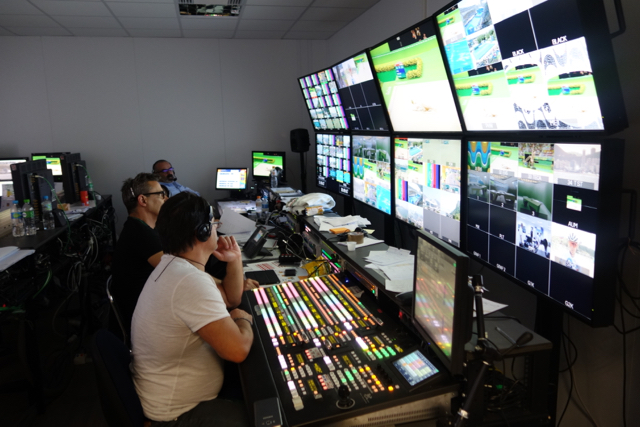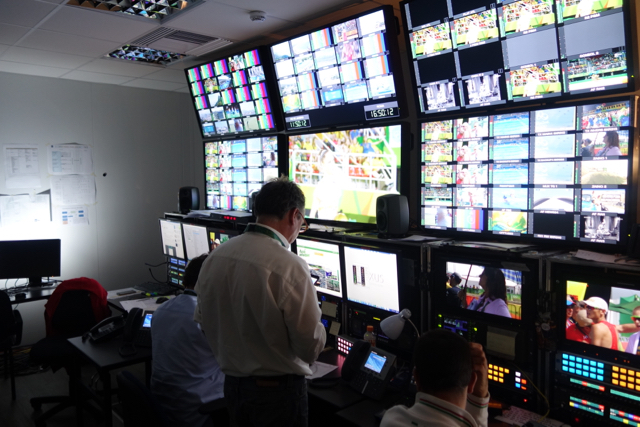Live from Rio 2016: RAI Team Stays Local for Maximum Emotion
RAI, Italy’s national broadcaster, is on hand at the Rio Olympics with an operation that differs from many other broadcasters as the goal is to provide a completely produced signal from the IBC for three broadcast channels that are on air 24/7 back home.

RAI’s main production gallery at the Rio Olympics IBC is sending a completed broadcast signal back to Rome.
“We thought about using the OBS Multichannel Distribution Service (MDS) but it is very expensive and then we would still need people working on it back home in Rome,” says Pierluigi Giustina, RAI, chief engineer. “And by having our team here on site we are more tied into the emotions of the event.”
The three channels back home cover different events with the first offering aquatics and athletics, the second offering team sports, and the third news and highlights. There are also 24 channels of content being delivered to the Web and via the white label OBS Olympic Video Player app which features RAI branding.
Giustina says he is very happy about the way the team of 200 production professionals has performed and the quality of coverage that is being delivered back home. The IBC facility includes two production galleries that produce signals that are sent back to Rome via two SMT16 circuits. There is also a small news channel operation, two virtual studios, and eight Avid editing systems.

The RAI master control area at the Rio Olympics IBC.
A mix of EVS XT2 servers and XT3 servers are in use (the former for helping play events back after they occur and the latter the live show and for ingest into an Avid Isis storage system used by eight Avid editors. EVS XT Access allows the XT2 and XT3 servers to share content. A Grass Valley Trinix router in the machine room keeps audio and video signals on the move.
RAI’s presence around Rio includes two sets at the Casa Italia for interviews with athletes and celebrities, two green screen sets at the IBC that make use of For-A virtual graphics, and then two unilateral camera platforms at swimming and athletics to focus on Italian competitors.
New this year is the use of Lawo Remote 4 IP-based remote production system that is connecting the RAI IBC facility to studios and mixed zones around the Olympics.
“We’re very happy about the IP-based remote production for the studios, mixed zones, and camera platforms,” says Giustina. “We also can control the cameras remotely from the IBC.”
RAI is also making us of bonded cellular transmission with AVIWest systems being used instead of costly SNG vehicles.
“It helps us save a lot of money but it does need a lot of bandwidth,” says Giustina. “But we have been lucky as there is enough cellular coverage so we can transmit at 8-10 Mbps. Otherwise it would be a nightmare.”
